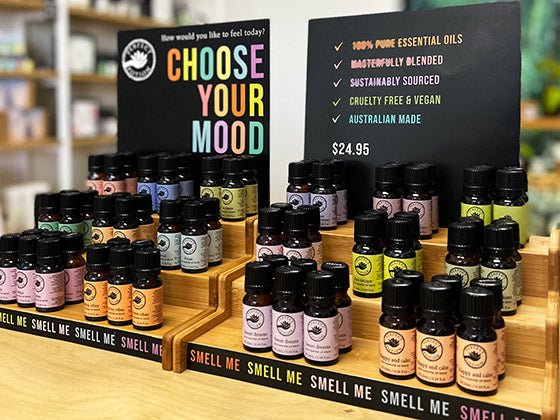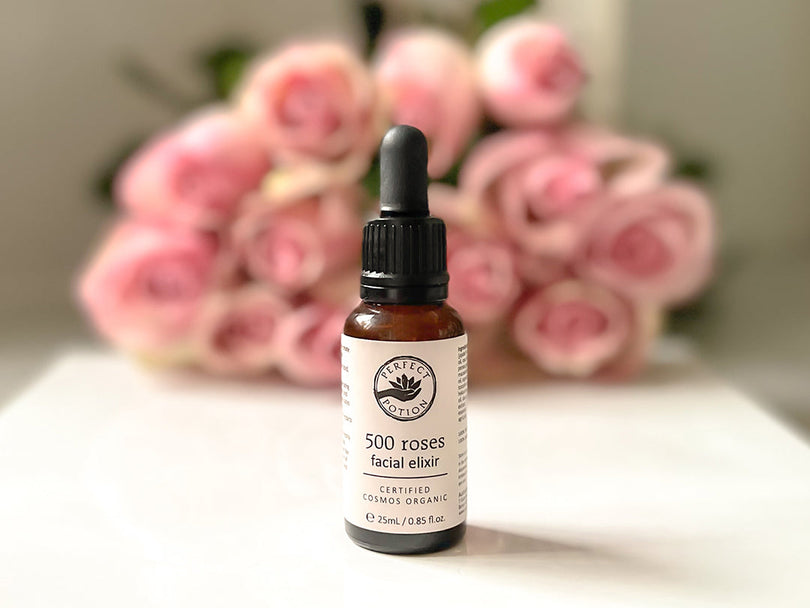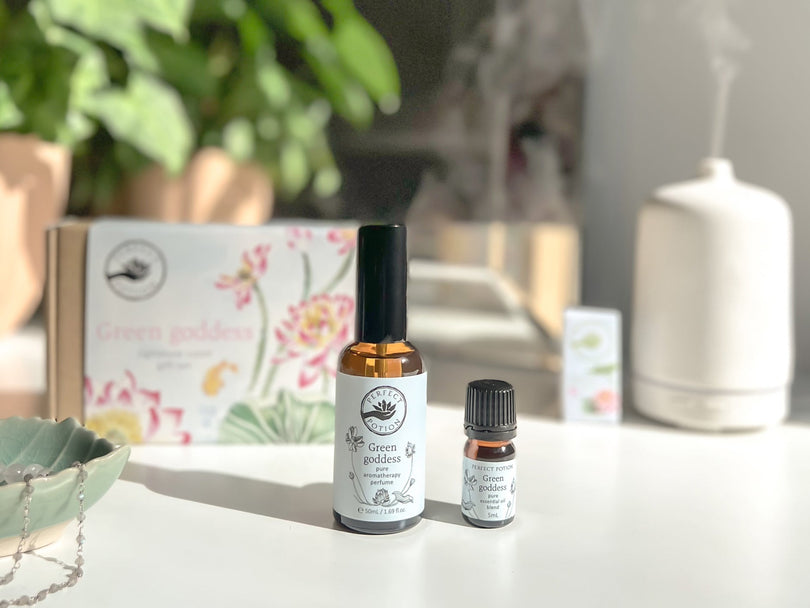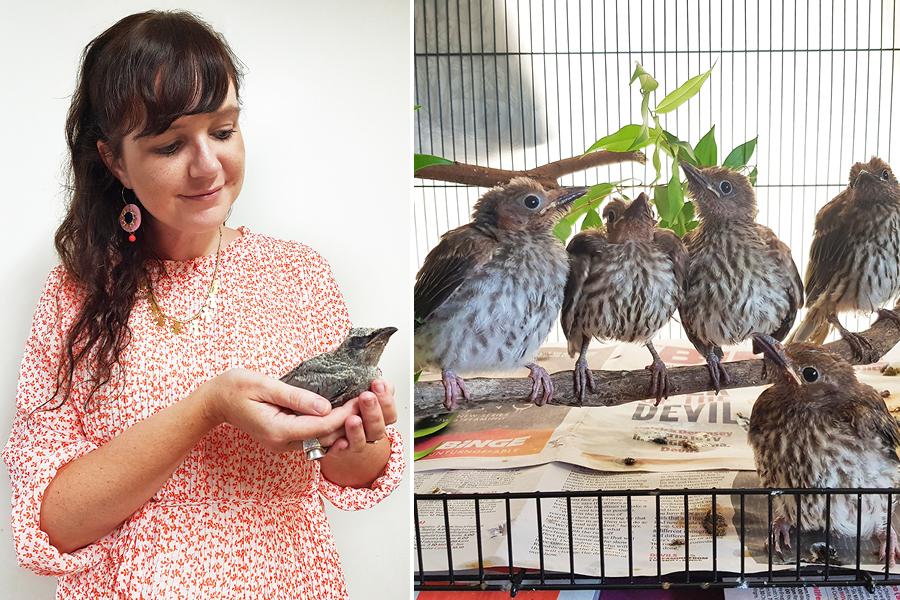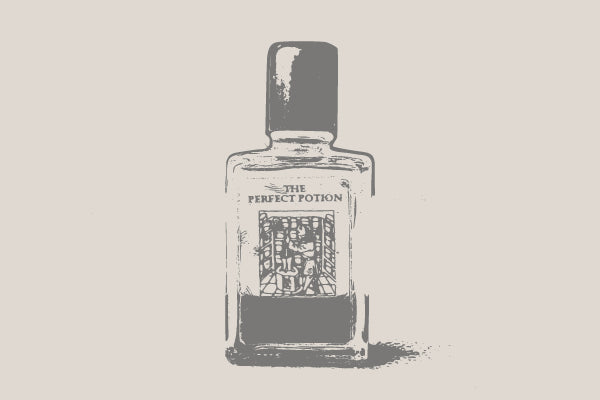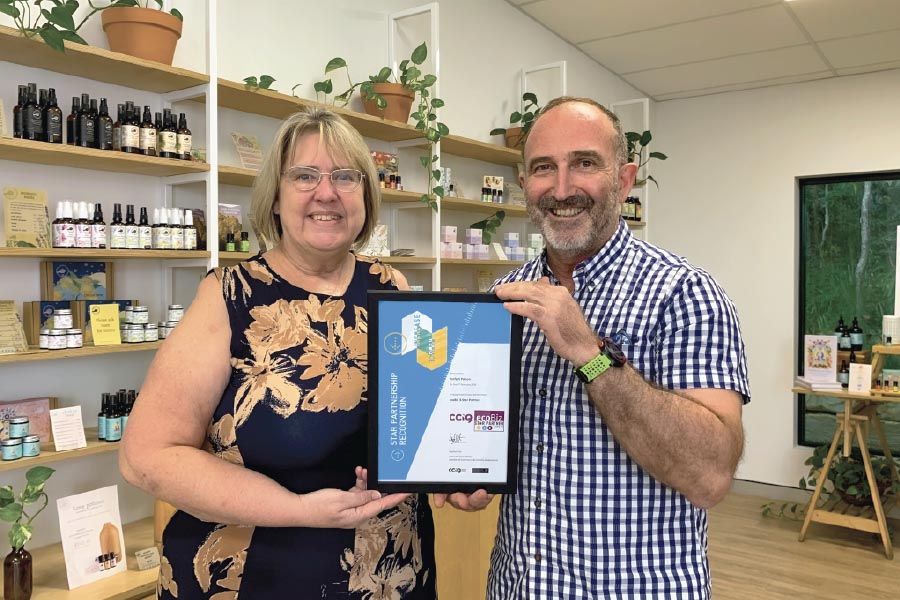World Wildlife Day 2021

Perfect Potion [PP]: Last year when we had a chat, you had recently cared for an orphaned ringtail possum that weighed just 60 grams! How is she doing now?
Elise Hilder [EH]: She was placed with an experienced possum carer who looked after her until she was old enough to be released back into the wild. She was eventually soft released which means she was released on the wildlife carer’s property. For orphans, soft release is ideal because it allows them to explore the wild and build up confidence gradually—all the while having the support of the carer nearby. The journey to becoming fully independent can take time for some orphaned species: particularly when they have not had the opportunity to learn how to “be wild” from their parents. Therefore, the carer takes on that responsibility as best as they can—teaching, guiding, and supporting the orphan to thrive in the wild. However, until that animal is confident and ready, soft release means the carer can continue to assist feed (or provide supplementary food) or simply provide a safe haven for the animal to retreat to when/if needed.
PP: You also rescued a juvenile magpie with Queensland Fire and Emergency Services – what a team effort! Any other daring rescues lately?
EH: Not a rescue but a pretty special reunite. After a recent storm, a nestling Kookaburra fell from his damaged nest which was located 8 metres up a tree in a termite mound. He was featherless (with only little pin feathers starting to form) and could not get up off the ground. A member of the public—whose house was located nearby—tried to reunite the dislodged nestling with its parents but after a full day’s effort and repeated failed attempts she reached out for help on a Facebook community page. Someone saw it, contacted me, and I contacted a good friend who is a qualified Kookaburra carer and together we brought the nestling safely into care. Fast forward four weeks, and baby kooka was all grown up and ready to fly. Kookaburras grow quickly! The member of the public let us know when the Kookaburra’s parents were in her yard and we raced over with the baby. However, when we arrived the parents had moved into nearby state forest. Together, the three of us plus the feathered baby went looking for the parents. We played sound recordings of baby Kookaburras on our phones to try and rouse the parents, but no one came. Finally, after over an hour an adult Kookaburra responded to the sound recording. Within seconds the parents had arrived and the rest of the Kookaburra family. The baby’s cage was placed on the ground, we opened the lid, stepped back, and watched the magic unfold. Needless to say, the baby flew and was back with his family within seconds. As we walked away and looked back, they were all perched high in a tree together laughing, with the baby in the middle, flanked on either side by family. I love moments like this because not only is a successful release/reunite what we aim for, but it also demonstrates positive people power, comradery, and teamwork. Wildlife rescues and releases often bring out the best in people.
EH: It’s all about the birds at my place: four Australasian Figbirds, two Black-faced Cuckoo-shrikes, and two Noisy Miners this week. I have also just soft released Blue-faced Honeyeaters, a Noisy Friarbird, and other Noisy Miners. Caring for orphaned birds requires feeding strict, species-specific diets throughout the day; flight practice in the flight room when they are old enough; teaching them how to forage, find, or hunt for food; buddying up with other birds for socialisation; physiotherapy (if needed for injuries); administering medication; cleaning; keeping detailed daily records (including daily weight checks, food intake, behaviour); keeping and lodging permit records, vet assessments; pre-release aviary time; and either hard or soft release back into the wild.

PP: Do you have a favourite rescue story?
EH: Any rescue with a good outcome is a favourite. However, Roberto was a gamechanger. I found him on the side of the road while out driving one day. I mistook his small stature for a rock and kept driving but a voice inside of me told me to turn back. So, I turned back and found not a rock but an injured Rufous Whistler—most likely a car strike victim. Roberto convinced me to take him in and care for him—officially beginning my life as a bird carer. After a few weeks of rest, a few trips to an avian vet, and medication to treat soft tissue damage, anaemia, and dehydration, Roberto was released back into the wild at the location he was found. Rufous Whistlers may be small, but they are incredible singers. Every time I drive by his release spot now, I always hear that unmistakable birdsong!
PP: Last year, you said that being a Wildlife Rescuer opens your eyes to the environment around you, and you learn to listen, watch and interpret the world from an animal’s perspective. Can you please paint us a picture? And is there any profound wisdom to find when you look at the world through wild eyes?
Since becoming a wildlife rescuer and carer I can’t go anywhere without hearing every bird song and alarm call in the area. I am always observing wildlife and noting what trees, and shrubs, and grasses are present (or absent). For example, frugivorous birds need native fruiting trees, nectivorous birds need nectar from trees such as Grevillea, Bottlebrush, or Eucalypt. If those trees are not present, then neither will the birds be present. And they do not just move on and find a new place to live somewhere else because animals are often territorial and can’t enter someone else’s territory. The animal world is as complex as our own and we need to make a commitment to try and understand it better.
PP: What is your favourite thing about Australian wildlife, and do you have a favourite animal?
EH: We have spectacular parrots in Australia—the home of birdsong. However, it is very hard to choose a favourite animal. Eastern Grey Kangaroos, Bandicoots, Manta rays, Yellow-tailed Black Cockatoos, and Blue-faced Honeyeaters all have a special place in my heart but that’s just the beginning of my favourites list! I also love the Spangled Drongo and Thorny Devil lizard!PP: If you were an animal, what would you hope to be?
EH: A frugivore (fruit-eating) or grainivore (grain-eating) bird—a vegetarian that can fly!
PP: What are three things you’d like people to know about wildlife?
EH:
1. Wild does not mean hardy, tough, indestructible. Animals are fragile, and many species can die from stress alone.PP: What are your hopes for the future of wildlife?
EH: More sustainable and ecological development practices that include enforced reduction of speed limits in wildlife crossing areas; construction of wildlife corridors/crossings/bridges; and the establishment of more protected areas. Also, a large portion of wildlife conservation, wildlife medicine, rehabilitation, and education is done on a voluntary basis, therefore it would be nice to see more funding allocated to wildlife workers.PP: Where could someone go to learn more about wildlife and get educated on how to help?
EH:• Wildlife Hospitals (i.e., Australia Zoo Wildlife Hospital, Currumbin Wildlife Hospital, RSPCA Wildlife Hospital)
• Wildlife Sanctuaries (I.e., Currumbin)
• Wildlife Groups (i.e., Wildlife Queensland, BirdLife Australia, Australian Wildlife Conservancy).
PP: And finally... what are your favourite Perfect Potion products?
In the context of wildlife caring, definitely the Australian Journey Hand and Body wash. The Australian Journey hand wash is great because it uses native ingredinets, is gentle and hydrating on skin, and is safe for me to use when handling animals – I use it between handling different animals and all throughout the day, and it smells divine.
Rose Water spray and Passion Elixir Perfume are my favourite indulgent pleasures! Fire is my favourite oil, followed by Persephone. But seriously, sooooo many favourites and I use the Purify Cleansing Gel, Balance Moisturiser and a lip tint every day!


